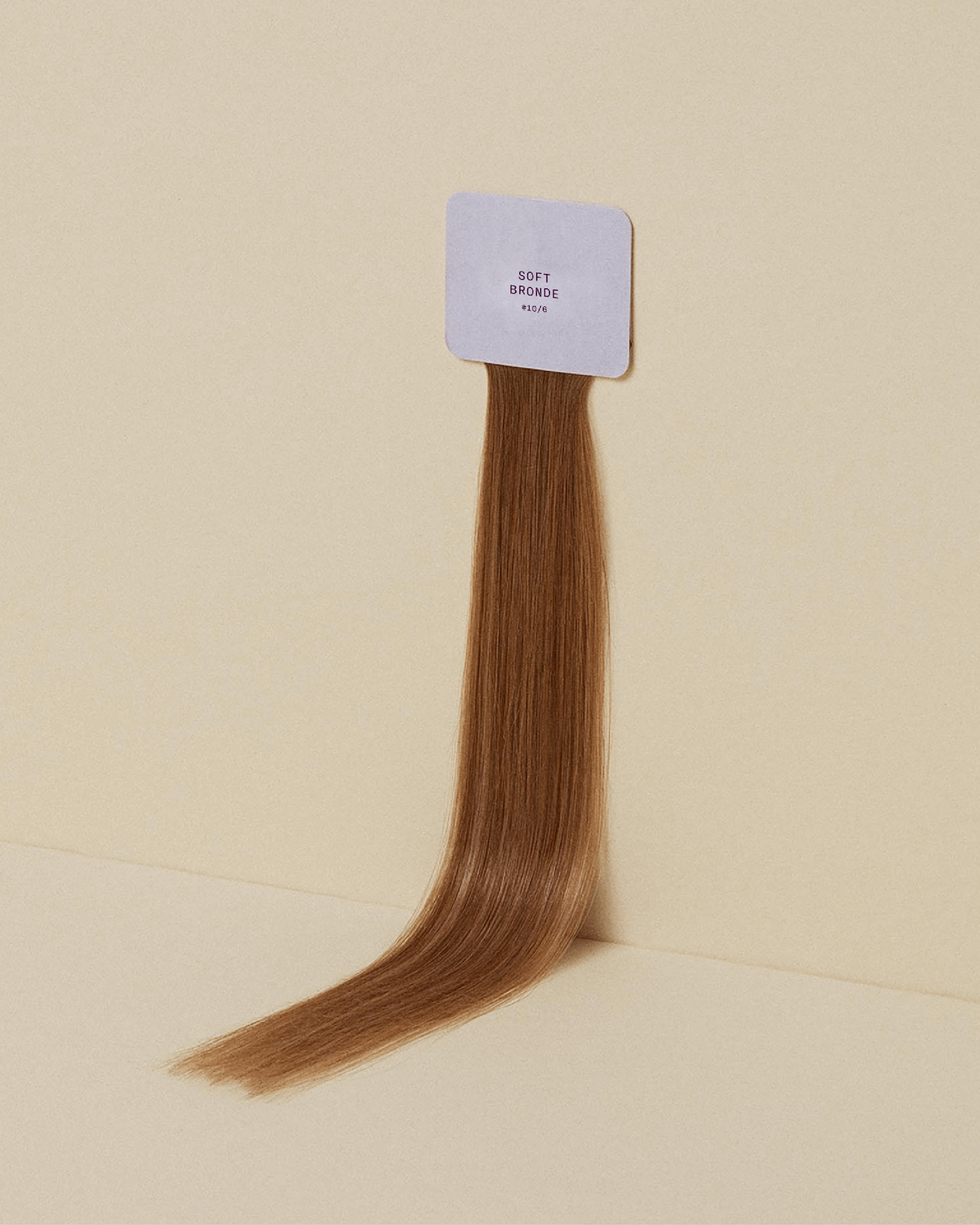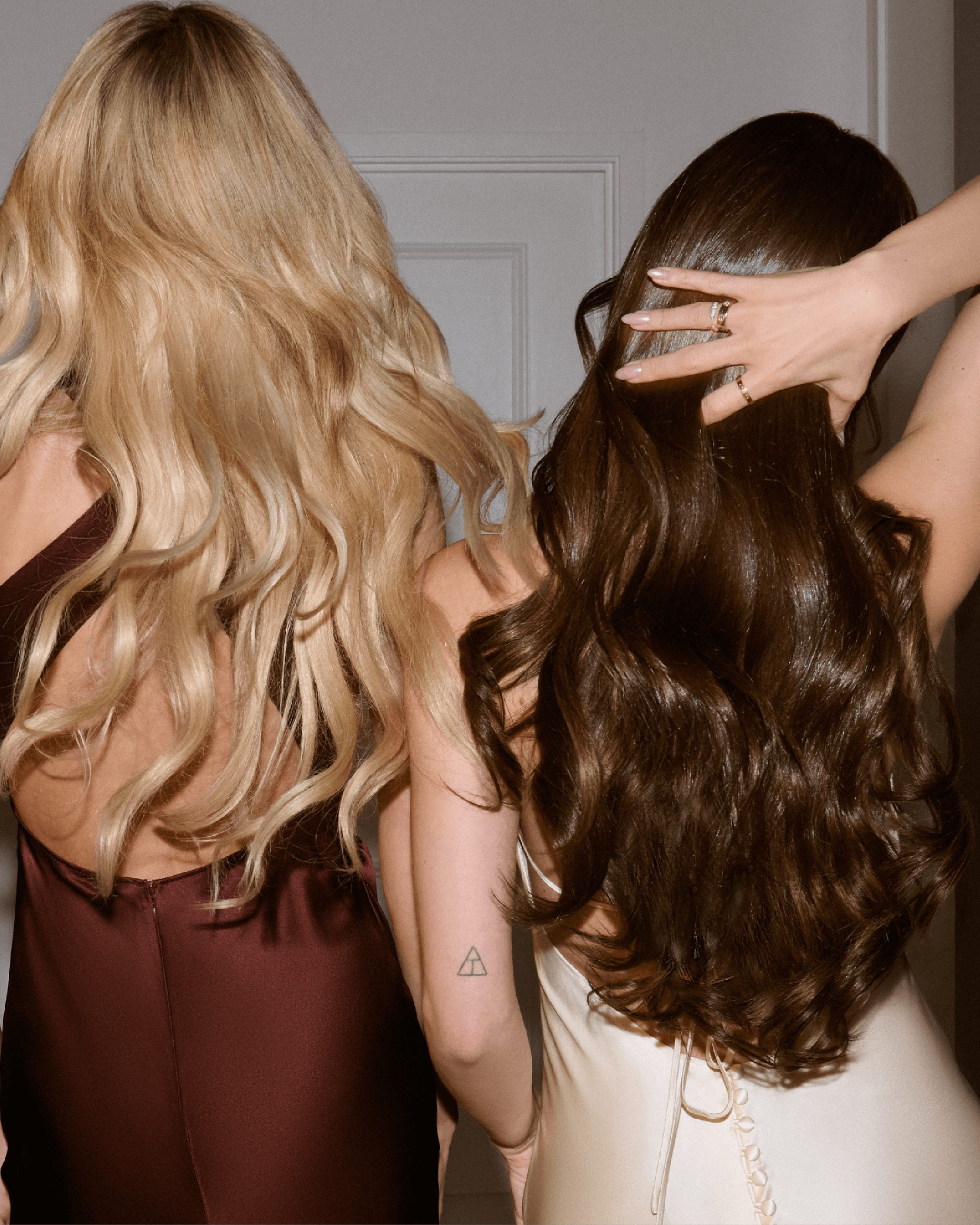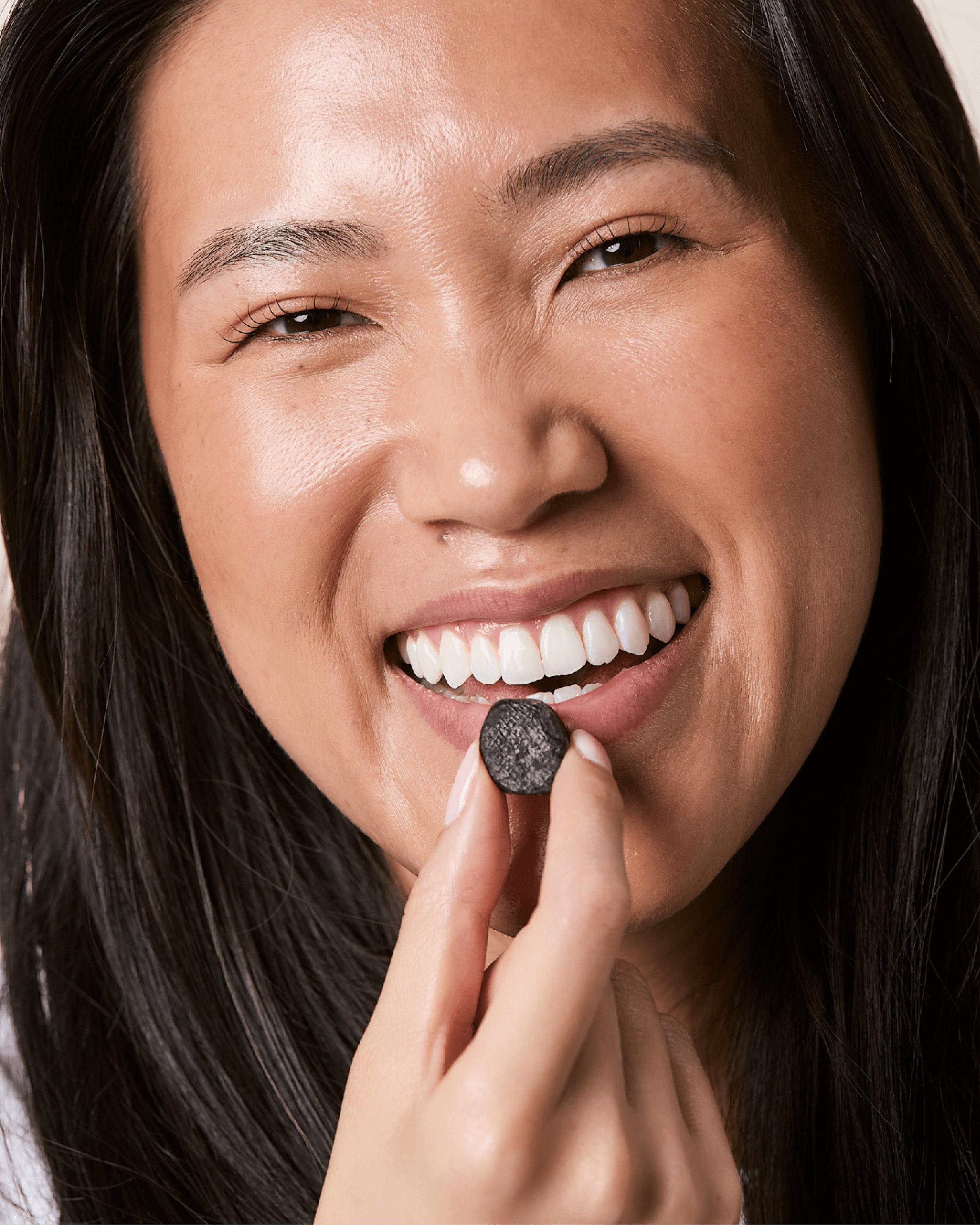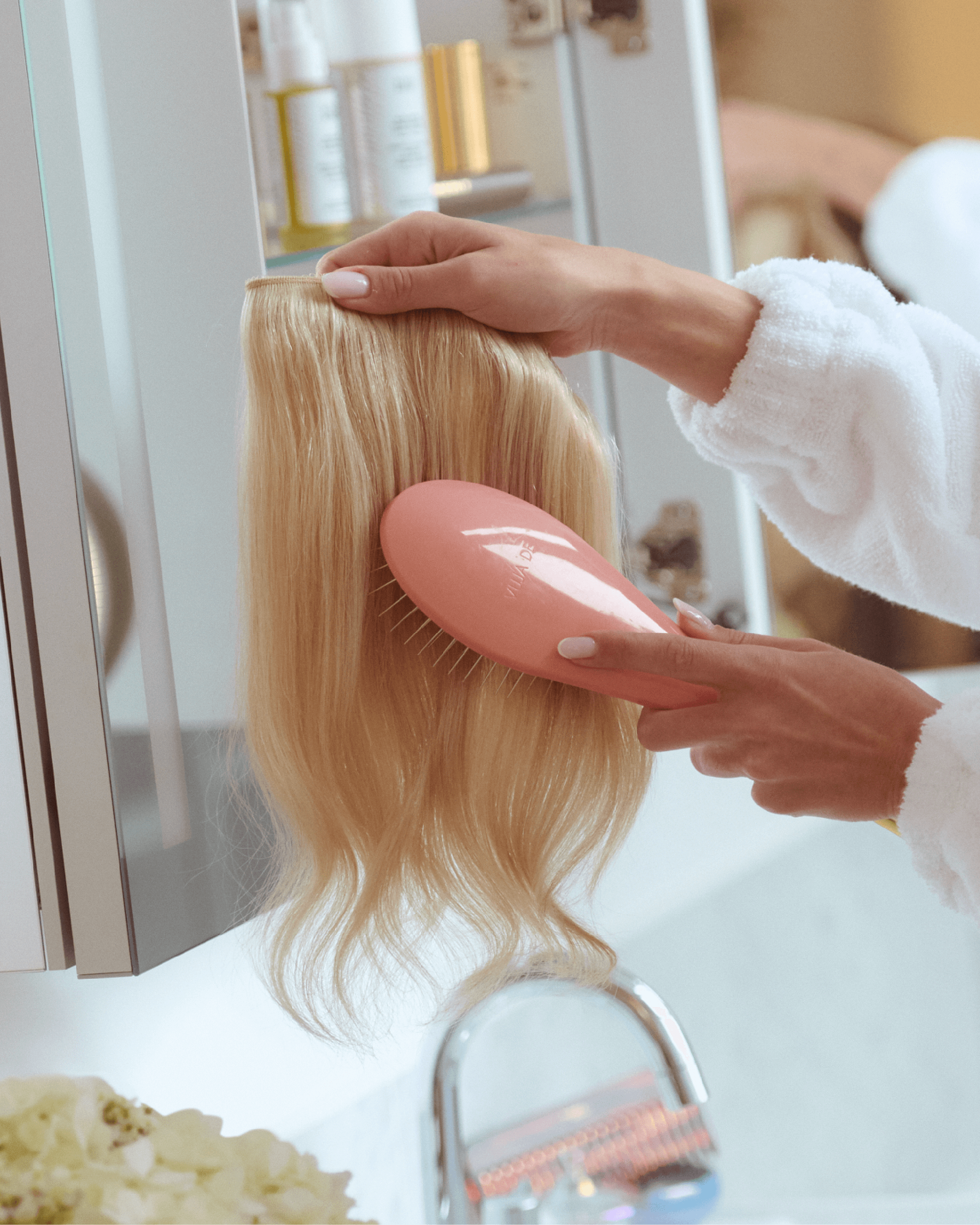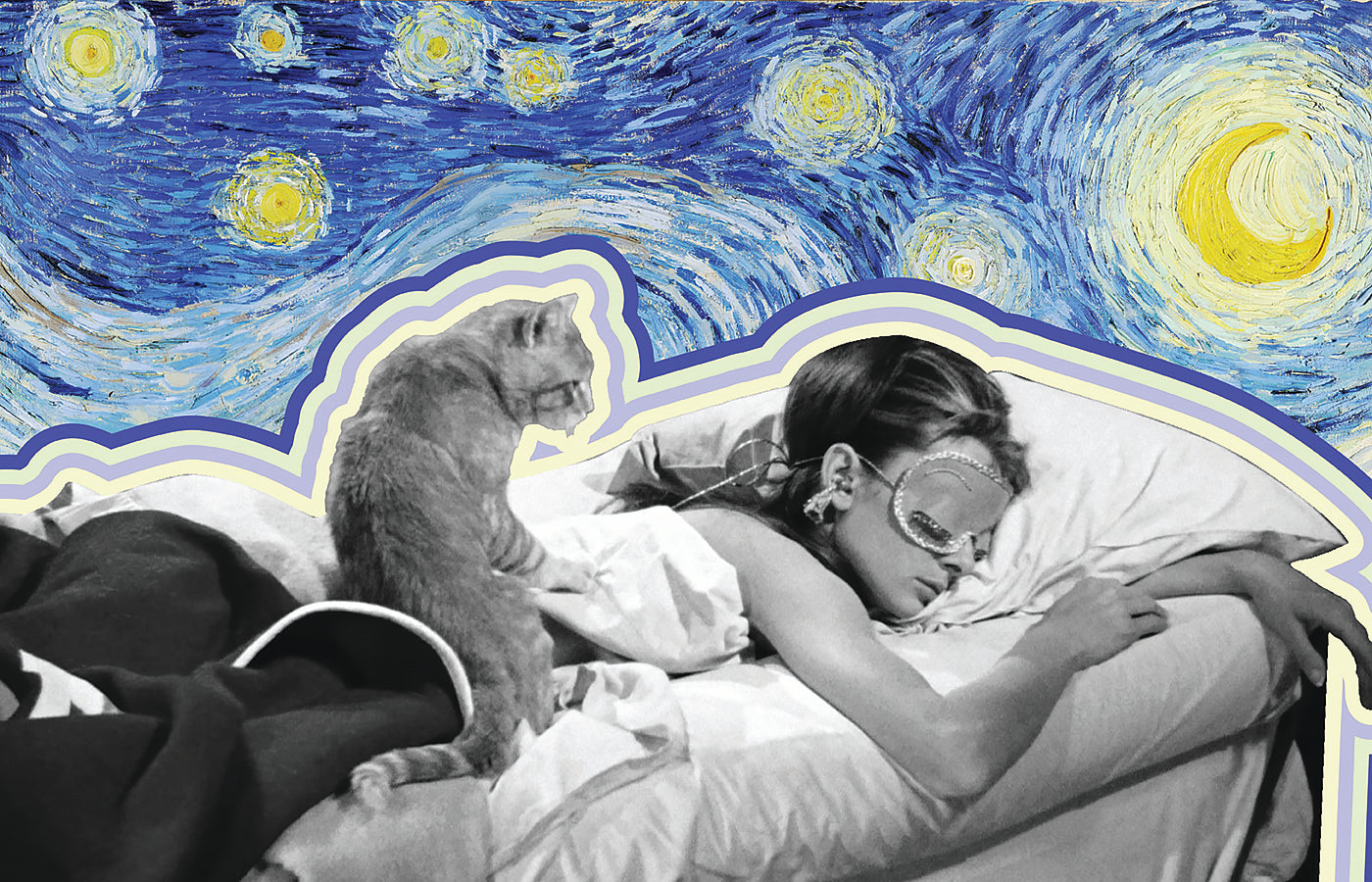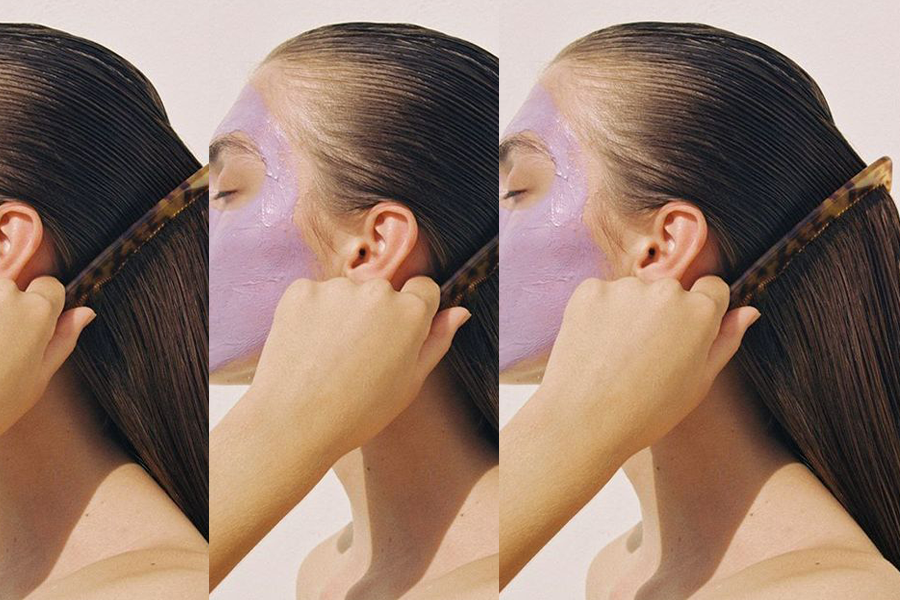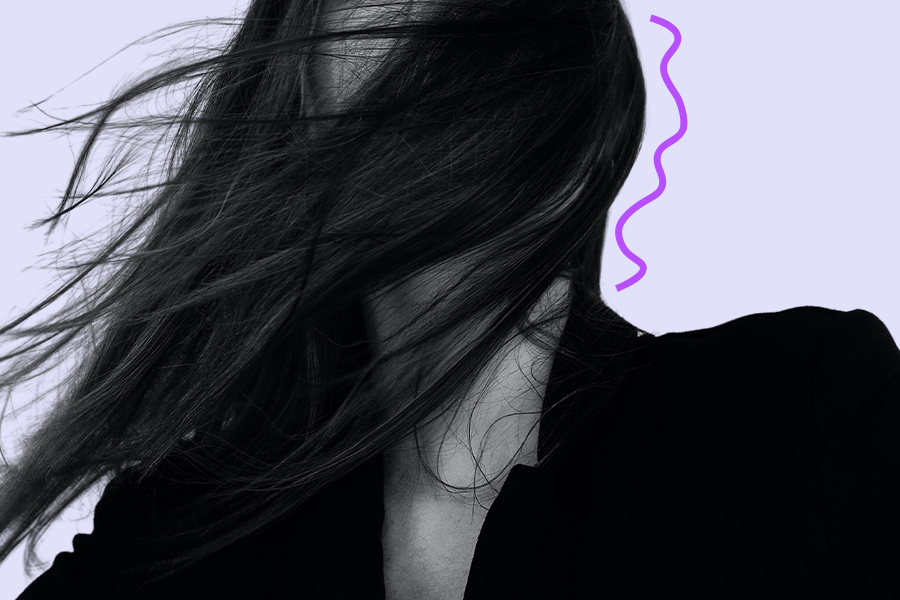The Highlights:
|
Did you know that you damage your hair more during your 8 hours of beauty sleep than you do for the rest of the day?
And, during the night your hair will experience an unsettling amount of friction (unless you use a good silk pillowcase) which can break your hair apart, leaving it scattered all over your pillowcase in the morning.
A great deal of your hair's protection at nighttime comes down to which protective sleep hairstyle you use when you're sleeping.
And if you're new to this, then you're in the right place.
In this post I'll share my top 10 protective sleep hairstyles, paired with expert nighttime haircare advice to keep your hair damage free while you sleep.
What are protective sleep hairstyles?
A protective sleep hairstyle protects your hair from a variety of nighttime issues, while caring for it. Some hair slumber issues are:
- Tangling
- Breakage
- Frizzing
- Friction related damage
- Hair thinning
- Bending and stretching
- Pulling at the roots
- Hair loss
In addition to this, the right protective sleep hairstyle will also help your hair by:
- Maintaining hairstyles/waves/textures that you have applied the day or night before. This in turn ensures that you don't have to apply these again in the morning, saving you time your hair from additional styling.
- Avoiding dents in your hair, which often require heat styling to remove
Read Next: How To Get Natural Waves At Home
What makes one protective sleep hairstyle better than another?
No two protective sleep hairstyles are the same. What hairstyles you should sleep in depends entirely on the following:
- How prone are you to frizz?
- Is your hair wet or dry? (Ideally dry)
- Do you have thick hair or thin hair?
- Is your hair long or short?
- Have you added a hair mask or oil for the night?
- What do you want your hair to look like in the morning? (Sleek or wavy, etc.)
- What's your sleep style? Back-sleeper, side-sleeper, front-sleeper, tosser-turner?
Below are 10 protective sleep hairstyles and nighttime haircare advice. This will help you choose the protective sleeping hairstyle that best suits your needs/wants, hair type, and current hair situation.
Read Next: Satin vs Silk Pillowcase For Hair: Which Is The Right One For You?
10 Protective Sleep Hairstyles
1. Loose Plait

The loose plait is an incredibly easy way to manage your hair overnight, especially for back and side sleepers as it lays flat.
This nighttime hairstyle is suitable for all hair lengths and thicknesses, and will ensure you wake up with a pretty, slightly wavy hairstyle.
Benefits:
- It's very simple to do. No special techniques required.
- Perfect for all hairstyles and sleep types.
- The ideal protective sleep hairstyle for long hair.
- Adds textured waves to your hair the next day.
- The waves are adjustable in size depending on the tightness of your braid.
2. Front Top Knot

This protective sleep hairstyle maintains various kinds of hairstyles while preventing any hair bends or dents come morning.
It's suitable for all hair thicknesses, however it's ideal for girls with long hair.
Benefits:
- Suitable for all hair thicknesses.
- Wake up with straight hair, no texture or dents.
- One of the best protective sleep hairstyles for long hair.
3. Loose Low Ponytail In A Sleep Cap

A silk sleeping cap is a godsend for anyone who wants to keep their hair smooth, frizz-free, and tangle-free all night. Also, this may be one of the best protective sleep hairstyles for short hair.
Turn each sleep into an 8-hour haircare routine. If you don’t want to invest in a silk pillowcase yet, a sleep cap is your next best bet.
Silk is naturally smooth texture which reduces friction against your hair. It acts as a barrier against breakage and helps you get softer hair—naturally.
It's one of the many affordable luxuries that you really can't afford to live without.
Benefits:
- Noticeably less frizz, instantly.
- Smoothens your hair.
- Reduced friction, breakage and damage to your hair.
- No tugging and pulling or excessive hair loss (like you get from cotton pillowcases).
4. Loose Bun

Nourishing your hair with natural oils is like feeding your body with vitamins—essential for vitality and health. Doing it before putting your hair up into a loose bun? Total game-changer.
The right oil can work wonders, from healing an unhealthy scalp to imparting a silky sheen to your tresses.
Treating your hair with oils can be crucial in winning the nightly battle of protecting your hair.
Benefits:
- Hydrates and nourishes your hair while you sleep.
- Protects your hair from friction
- Creates a silky sheen.
5. Silk Scarf Wrap

Let's face it: after a late-night shower, the temptation to hit the sheets with damp hair is strong. But remember, wet hair is more fragile and prone to breakage.
If you aim to maintain those luscious locks, drying your hair before bedtime is crucial. Don’t have time to use a blow dryer? Don’t worry, there’s a right way to sleep with wet hair.
Get a silk scarf or handkerchief, put all your hair in the scarf, wrap the two ends together and secure them with a few loose pins.
This trick will help your hair dry while you sleep and prevent breakage and split ends. Win-win!
Benefits:
- No need for damaging heat.
- Perfect for curly and fine hair types.
6. Heatless Overnight Curls

Here’s another good protective sleep hairstyle for wet hair: heatless overnight curls.
Not only is this nighttime hairstyle perfect for wet/damp hair, it's also an excellent way of adding curls or waves to your hair without heat styling.
Benefits:
- Zero heat damage: Preserve the integrity of your hair by avoiding direct heat.
- Save time: Wake up with ready-to-go curls.
- Versatility: Works as a hair protective style for sleep and a trendy daytime look.
- Great protective sleep hairstyle for medium hair as well as long hair.
7. Dutch Festival Braids

While festival hair trends like glitter roots and space buns are fun, there's one style that stands out because of its practical value: the Dutch braid.
Not only does it flaunt a unique aesthetic, but it's also one of the best protective sleep hairstyles for curly hair.
It's like having the best of both worlds: fashion and function.
Even if you have a diamond face shape, these braids can beautifully frame and complement your features. Let's get ready to master this protective sleep hairstyle for curly hair.
Benefits:
- The perfect protective sleep hairstyle for curly hair.
- Looks great, even in the morning when it gets a bit messier.
- Versatile: Works as a hair protective style for sleep and a trendy daytime look.
Note: The video was made for creating dutch festival braids with Halo Hair Extensions, however you can also create this style as a protective sleep hairstyle sans halo hair extensions and other decorations.
8. Princess Jasmine Ponytail

The Princess Jasmine Ponytail, inspired by the enchanting world of Agrabah, isn’t just a visual treat; it's a functional marvel.
This ponytail style isn't just easy to achieve, but it also offers a touch of royal flair. Especially ideal as a protective sleep hairstyle for curly hair, it can be a lifesaver for those struggling with an oily hair day or simply wanting a change.
Best of all? It’s one of the easy protective hairstyles for sleeping that doesn't sacrifice style for comfort.
Benefits:
- Keeps curly hair tangle-free overnight.
- Suitable hairstyle for oily hair days.
- Perfect protective sleep hairstyle for natural hair.
- Can be enhanced with hair extensions for added volume and length.
9. Boho Braids

For those yearning for a touch of indie flair, boho braids are your go-to. These aren’t just chic; they're amongst the best protective sleep hairstyles for wavy hair, ensuring you wake up with perfectly tousled waves without the fuss.
This is the perfect protective sleep hairstyle for side and front sleepers. And it works for fine and thick hair types.
Benefits:
- Looks good AND protects your hair while you sleep.
- Perfect for straight and wavy hair types.
- Wake up with tousled waves.
10. Twisted Rope Braid

Long hair can sometimes have a mind of its own. But for all my long-haired friends out there, the twisted rope braid is your saving grace.
Not only is it one of the best protective hairstyles to sleep in, but it also ensures your hair remains tangle-free throughout the night, so you can wake up feeling more Rapunzel and less witch from the woods.
Benefits:
- Helps reduce friction on long hair, which can lead to breakage.
- Keeps long hair organised and tangle-free.
- The perfect protective sleep hairstyle for long hair.
- Gives a soft, wavy texture upon unraveling, making it an ideal hair protective style for sleep and day wear.
Read Next: The Ultimate Guide To Choosing Grey Hair Extensions
FAQs About Nighttime Hair Protection
Q: Are protective hairstyles necessary?
Most hair care related hacks will give you a small incremental gain in terms of hair health. And some will give you a big gain. Protective sleep hairstyles are one of those things that give you BIG gains.
Q: What can I use to protect my hair at night?
Aside from the right protective sleep hairstyle for your hair type and sleep style, i would also suggest that it makes sense to invest in a good silk pillowcase to protect your hair. You will be surprised at how effective they are.
Q: Does sleeping in braids protect hair?
Absolutely! Braids, especially styles like the Dutch festival braids or twisted rope braid, can help reduce friction and tangling.
Q: How much hair loss is normal while sleeping?
The amount of hair that someone may lose during sleep varies from person to person. However, in general the average person is said to lose 100 strands of hair per day. And depending on what you do with your hair during the day, a lot of that hair may come out at night, while you're tossing and turning.
A good protective hair sleep style is meant to minimise the amount of hair fall you experience at night, whilst also minimising other factors like friction, tugging/pulling, and more.
Having beautiful hair isn’t just about the right products or the perfect cut; it’s also about how you treat it overnight.
Whether you have straight, wavy, curly, fine, or long hair, there's a protective sleep hairstyle out there for you.
And remember, a little oil and that luxurious silk pillowcase can make all the difference. Sweet dreams and even sweeter hair days ahead!
